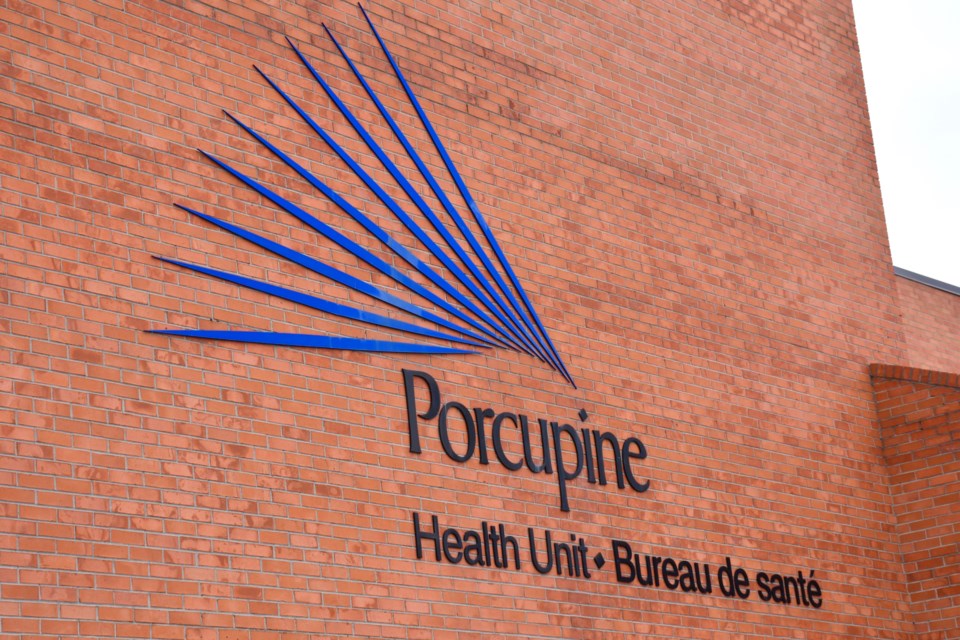With a recent spike in suspected opioid overdoses, the health unit is reminding people that no one is safe with the toxic drug supply on the streets.
On March 4, the Porcupine Health Unit (PHU) issued an alert about an increase in suspected opioid poisonings.
Laurie Dagg-Labine, PHU manager of school programs, substance use and mental health, said the region is currently in level yellow. She would not say how many suspected overdoses there have been to trigger the alert.
The PHU uses green, yellow and red for its suspected overdose alert system. While green doesn’t mean there aren’t overdoses occurring, she said yellow means a heightened number and red is when the issue needs immediate attention.
“We can't really say it's this many overdoses or this many deaths that really cause it, it's something that is a little bit more grey than a finite number. We might just see things that are happening in the community that are definitely different or off trend,” she said.
The region, she said, has been moving in and out of yellow alerts, with some red alerts in the last few years.
In the first three quarters of 2023, the Ontario coroner's data shows Timmins had the fifth-highest mortality rate in the province with 16 opioid toxicity deaths, or 50.7 deaths per 100,000 people. This number is for Timmins specifically and not the entire Porcupine Health Unit area, which saw a total of 23 deaths during the first three quarters.
The provincial rate for that time period was 17.5 deaths per 100,000 population — or a total of 1,947 opioid toxicity deaths.
SEE: Protestors demand action to keep Timmins safe consumption site open
The ongoing overdoses are happening across communities in the region to a wide variety of people, Dagg-Labine said.
“I think this is the one sort of most important messages, that our toxic drug supply doesn't discriminate against anyone. We're seeing young folks, like young teenagers, having overdoses, we're seeing senior citizens, people into their 70s, we're seeing people that have careers, people that are professionals, people who have families, people that own their own homes,” she said.
“It's not the demographic that is often tagged with the overdose crisis. It's really happening across communities, across age groups, across socio-economic demographics … I hate to say no one is safe, but really there is no safety with a toxic drug supply. Anyone who's using unregulated drugs is at risk.”
For the substances being used, Dagg-Labine said there’s been several. People are using crack, cocaine or speed laced with opioids or other toxic substances, she said.
“So folks that are not even anticipating an opioid-type response are dying from opioid overdoses because their drug is being laced with this,” she said.
“Anything that's unregulated has potential to have toxic substances in it. And there is no security for anyone who's using substances off the street. There's nothing.”
Last month, the City of Belleville experienced a drastic increase in overdoses with a total of 17 within a 24-hour period, 14 of which occurred within two hours.
Dagg-Labine said the crisis Belleville experienced brought back a conversation within the Porcupine Health Unit’s drug strategy steering committee about planning for a mass toxicity mock event to plan and test their system.
“I think at some point, our entire province is bracing for impact in a way. With the closures of consumption treatment sites across the province, with new substances that are extremely toxic that we're seeing all over… We've got over 15 health units that are currently in drug alerts right now,” she said.
The safe consumption site in Timmins is one of the facilities facing closure.
Safe Health Site Timmins (SHST) is set to close unless new funding is committed.
It was funded by the City of Timmins from July 2022 to Dec. 31, 2023. Timmins and District Hospital, which also operates the facility, provided funding from Jan. 1., 2024, to March 31.
If it closes, Dagg-Labine said it’s going to be a substantial loss and put more pressure on an already stressed health system.
“We're going to see more folks using drugs outside in the community … Because, you know, it doesn't stop people from using substances, it just takes away a support that we have in the community,” she said.
